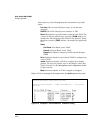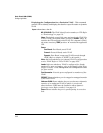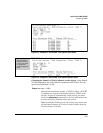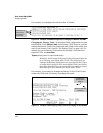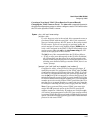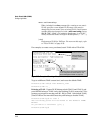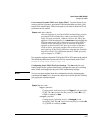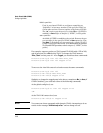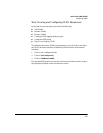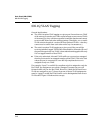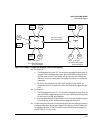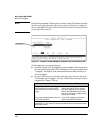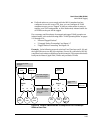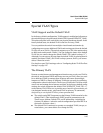
2-38
Static Virtual LANs (VLANs)
Configuring VLANs
For example, suppose you have a VLAN named VLAN100 with a VID of 100,
and all ports are set to No for this VLAN. To change the VLAN name to
“Blue_Team” and set ports A1 - A5 to Tagged, you would use these commands:
ProCurve(config)# vlan 100 name Blue_Team
ProCurve(config)# vlan 100 tagged a1-a5
To move to the vlan 100 context level and execute the same commands:
ProCurve(config)# vlan 100
ProCurve(vlan-100)# name Blue_Team
ProCurve(vlan-100)# tagged a1-a5
Similarly, to change the tagged ports in the above examples to No (or Auto, if
GVRP is enabled), you could use either of the following commands.
At the global config level, use:
ProCurve(config)# no vlan 100 tagged a1-a5
- or -
At the VLAN 100 context level, use:
ProCurve(vlan-100)# no tagged a1-a5
Note You cannot use these commands with dynamic VLANs. Attempting to do so
results in the message “VLAN already exists.” and no change occurs.
forbid < port-list >
Used in port-based VLANs to configures < port-list > as
“forbidden” to become a member of the specified VLAN, as
well as other actions. Does not operate with protocol VLANs.
The “no” version sets the port(s) to either No or (if GVRP is
enabled) to Auto. Refer to chapter 3, “GVRP”, in this guide.
auto < port-list >
Available if GVRP is enabled on the switch. Returns the per-
port settings for the specified VLAN to Auto operation. Note
that Auto is the default per-port setting for a static VLAN if
GVRP is running on the switch. (For information on dynamic
VLAN and GVRP operation, refer to chapter 3, “GVRP”, in this
guide.)



